Have you ever thought about simply waving a magic wand and instantly solving all your problems when it comes to target audience segmentation and cost-effective campaigns? Well, we have good news and bad news. The bad news is that outside of Hogwarts, few magic wands exist. The good news is that you don’t actually need one. What you do need is a comprehensive understanding of your current and potential customers’ behavioral patterns to be able to create optimized experiences, increase engagement, and improve ROI. Keep reading to see how behavioral segmentation can help.
By the way, if you’re also curious to explore customer loyalty insights, look into our Global Customer Loyalty Report, which showcases current and future trends based on 30.5 million member actions and provides a comprehensive and compelling look into customer loyalty.
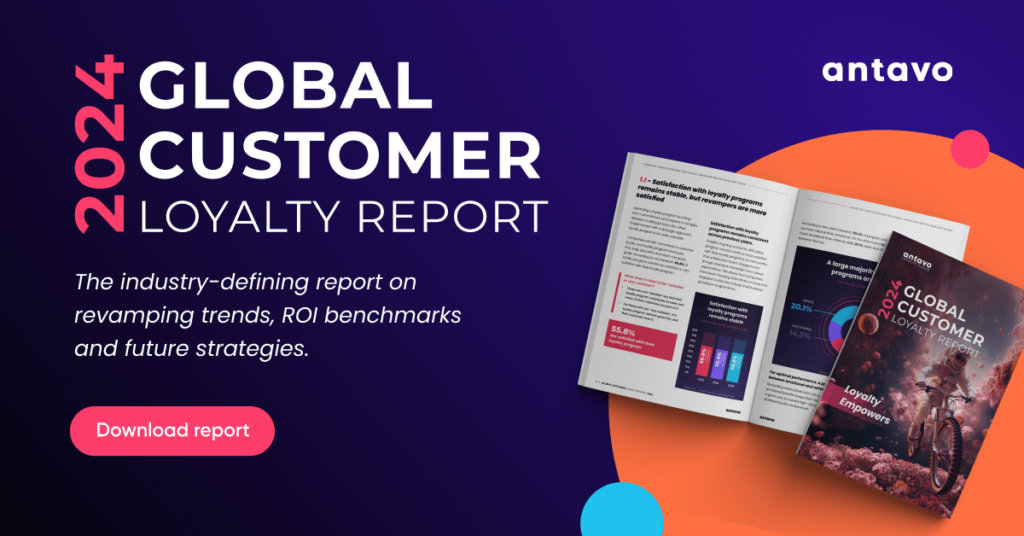
The Basics of Market Segmentation – Shouting Into Space or Aiming for the Moon?
Would you try selling the same pair of sneakers to a 40-year-old customer who’s started exercising after a New Year’s resolution and a 24-year-old university student who regularly runs marathons? Of course not! Why? Because it simply won’t work. They are in different stages of their lives and at different levels of activities and have various needs and expectations for sportswear. On top of that, they don’t have the same knowledge of your brand and products.
Targeting a diverse audience with a similar product or message without splitting them into smaller, identifiable, and manageable segments makes it nearly impossible for your campaigns to succeed.

Market segmentation is an objective, data-based marketing process that allows you to identify and group your potential and existing customers (aka your target market) into smaller segments based on their characteristics, geographical data, attitude, brand awareness, purchase history, and actions taken on your website.
Obtaining enough data, analyzing it, and using it to identify your market segments should be the foundation of every action your company takes. Market segmentation helps split your audience into groups based on common denominators and behavioral patterns. This allows you to tailor your content to reach the accurate segment and communicate correctly, increasing the chances of successful targeting.
How Does Behavioral Segmentation Help You Reach Target Markets?
Behavioral segmentation is a data-driven method that puts the following customer insights under the microscope:
- General knowledge about the company and its products
- Content engagement
- Purchase history
- Website visits
- Online shopping habits
- App and loyalty program usage
Gathering and using this information will raise the odds of your campaign’s success, especially if you aim it at an established audience segment. If we look at email campaigns specifically, subscriber segmentation is the ultimate driver for successful email campaigns, according to Hubspot. To create more successful emails, it is important to carefully collect and analyze insights and create your segments accordingly.

What is the Basis for Behavioral Segmentation?
Behavioral segmentation may be based on:
- CRM purchase history,
- Website tracking,
- Customer surveys, and reviews,
- Gamified preference questionnaires,
- Loyalty programs,
- Social media engagement,
- Second/third-party data from marketing data providers
Tracking your customers’ behavioral patterns will lead to a complex understanding of your audience. It allows you to analyze those actions, draw the appropriate conclusions, segment your audience, and hyper-tailor your entire communication and campaigning system. It also brings you closer to understanding the reasons for potential customer churn rates, left-behind baskets, zero-engagement newsletter campaigns, and decreasing repurchase rates.
Benefits of Behavioral Segmentation
Segmenting shoppers into groups based on their exhibited behavior helps almost every division of your company:
- Maximized marketing funnel: Widespread data tracking allows the marketing team to accomplish better targeting with their communication and campaigns, elevating all levels of the marketing funnel.
- Next Level Customization: Utilizing zero-party data from your existing audience allows in-depth personalization, successful retargeting, and fully customized email campaigns.
- Improved ROI: A strategy based on current and measurable data will increase your chances of reaching the right customer segment, positively impacting CLV, and even expanding into new markets successfully.
- Correct Budget Structure: By getting a 360° view of your audiences’ behavioral patterns, you will have a much clearer picture of which segments need to be targeted more often, on which platforms, and at which time of year.
- Shaping and Evolving Your Product Range: Purchase history, in-store queries, and website search tracking help to identify top sellers, in-demand products, and currently unfulfilled niche markets.
- Enriched Customer Experience: Tracking customer habits on your website and apps using programs like Hotjar provides UI and UX designers with sufficient data to optimize, so customers will spend more time browsing and engaging.

The Four Most Common Types of Behavioral Segments
Now that we’ve established what behavioral segmentation is, which sources to pull the necessary insights from, and what types of benefits we can obtain, it’s time to look at the four most common behavioral segmentation types. These indicators serve as a baseline for creating segments:
- Usage-focused: This type of segmentation is based on usage frequency. Customers are split into categories based on the way they use a product or service and how often they use it. These categories are usually heavy users, medium users, and light users. Additional segments could be created for former users and first-time users.
- Occasion-focused: This category focuses on customer behavior around specific occasions, like holidays, graduations, and other important events in customers’ lives. As of the past few decades, this could very well include Black Friday as well, when shoppers exhibit very specific behavioral patterns, as reported by VML (formerly Wunderman Thompson).
- Benefit-focused: One of the most valuable ways to sort your audience into groups is to base segments on what specific benefits customers expect from a product or service. For some, product quality is above everything else. Others are more price-sensitive. Yet others want to see their values reflected.
- Loyalty-focused: This type of segmentation splits customers into groups based on their level of loyalty to your company. Are they already in a loyalty program? How active are they? How frequently do they engage, and which features do they use the most? This type of segmentation lets you see which customers need more attention, and which group could become advocates for your brand.
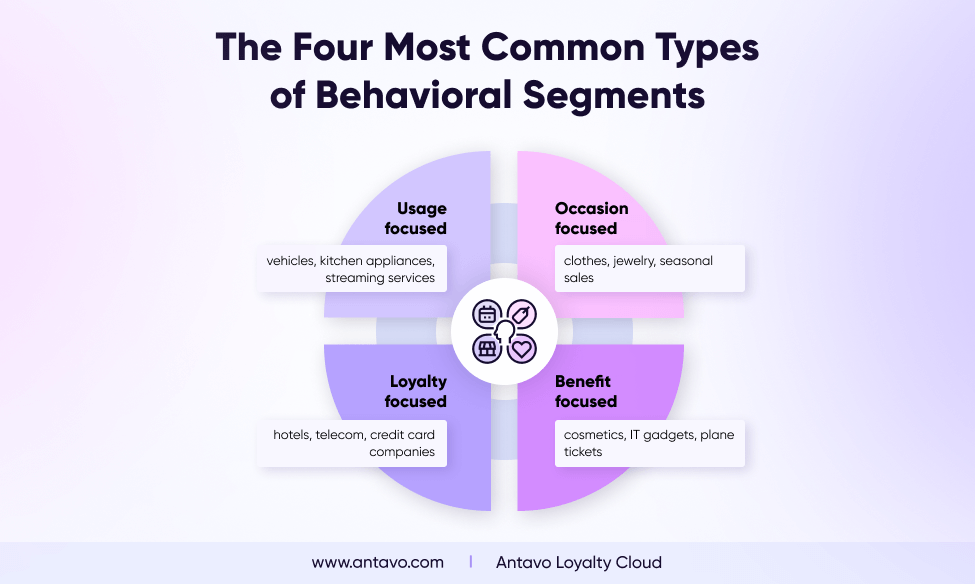
3 Industry Examples of Behavioral Segmentation
Utilizing customer insights and understanding how audience members interact with certain products, companies, and subscription services have driven science-based marketing for a while now. Let’s look at how three companies have achieved success.
Netflix – Playing Favorites
As the front-runner of streaming services, Netflix has come a long way in perfecting its personalization strategies. At the forefront of their efforts has always been predicting which titles people will enjoy, knowing how many hours they spend watching certain shows, determining which genres they prefer, which artists they like, and the visuals they are most likely to respond to.
Constantly collecting, analyzing, and using this data allows Netflix to continue to entertain, engage, and, most importantly, retain its viewers. Taking things to the next level, Netflix has found a way to personalize its visual elements as well. Displaying different imagery and artwork for a single show to people with different tastes has been a feature for a while.
Netflix improved this strategy even further when they introduced Dynamic Sizzles. This automated system shows users customized sizzle reels that match their individual preferences, making it even more likely that their audience will tune in to watch soon-to-be-released movies and shows.
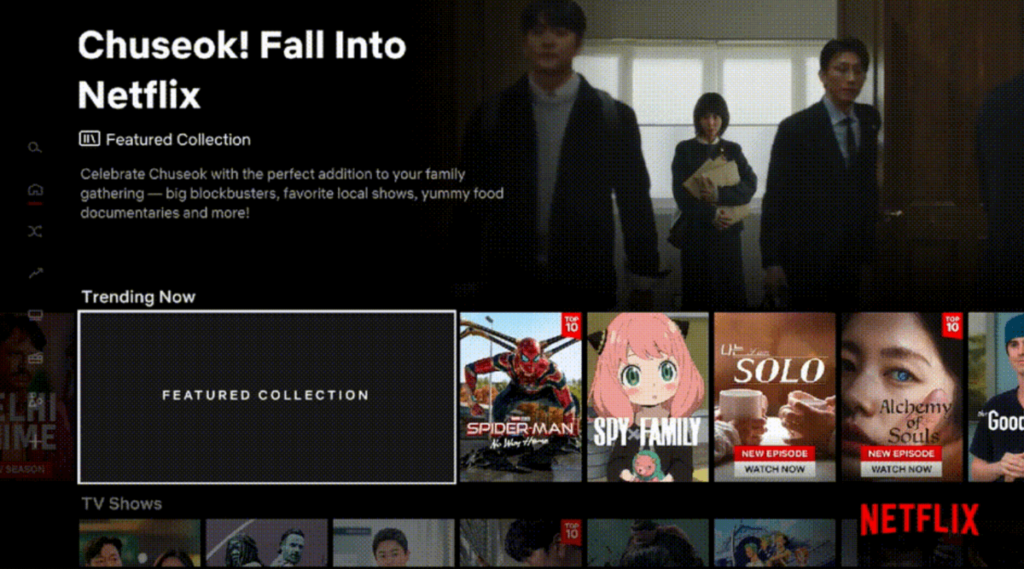
Kérastase – Solutions for Everybody
In the hair care market, the outstanding behavioral segmentation category is the benefits-based structure. Niche hair care brand, Kérastase is a prime example of this. Their branded salon line and online presence offer clients a solution and benefits-focused approach, helping them effortlessly target the right segment with the accurate product line.
Looking at their website, one of their prioritized product type categories is “Desired Result,” showcasing results like curl definition, density, and anti-frizz. They even provide an online questionnaire for visitors who aren’t sure which product line would work best for them.
Tracking purchase history, survey answers, and social interactions help the brand establish which categories specific segments are interested in, providing Kérastase with the perfect opportunity to launch targeted email campaigns, ads, and social media challenges.

Apple – Loyal Connection
Having created their own interconnected system with iOS-based devices and services, cultivating a dedicated follower base and pushed Apple to the top of the leaderboard with a 29.14% Worldwide Mobile Vendor Market Share. Continuously gathering and monitoring customer interactions and insights helps the company stay ahead of its competition.
Their main segmentation focuses are usage and loyalty: Targeting dedicated segments based on how they use Apple products allows the company to create personalized strategies for students, small businesses, and big corporations, enabling more efficient and cost-effective campaigns.
As for loyalty, Apple essentially uses entry-level segmentation. Customers are grouped into categories based on how long they’ve been with the company, how many products they currently own, accessories, and extra services that they can advertise to them. It is a brilliant and practical approach from a brand that thrives on upselling new models and services to a highly loyal audience.
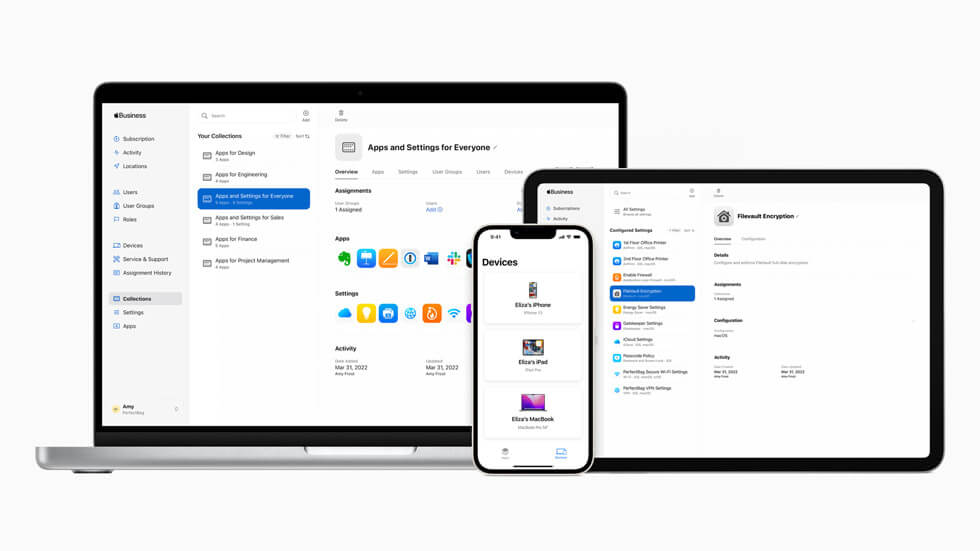
Behavioral Analytics in Loyalty Programs
When it comes to next-gen loyalty programs, gearing them towards both harnessing and utilizing essential behavioral data is a must. For instance, a loyalty program can be a useful source of first-party behavioral information, such as:
- Interaction history
- Transaction history
- Reward history
- Unlocked badges
- Completed challenges
- Account modification
More importantly, loyalty programs can entice members to contribute valuable first-party data. For example, they can receive rewards or bonus points for completing challenges, filling out surveys, or leaving product reviews. Then these insights can be utilized to map out customer preferences and lifecycle stages and to build campaign structures. To significantly improve the overall customer experience, it is imperative to gather a comprehensive understanding of frequent users, redefine strategies for customers who are at risk of leaving, and elevate and reward segments who refer to the brand and could turn into ambassadors. By taking these actions, you will not only retain your existing customer base but also attract new customers to your brand.
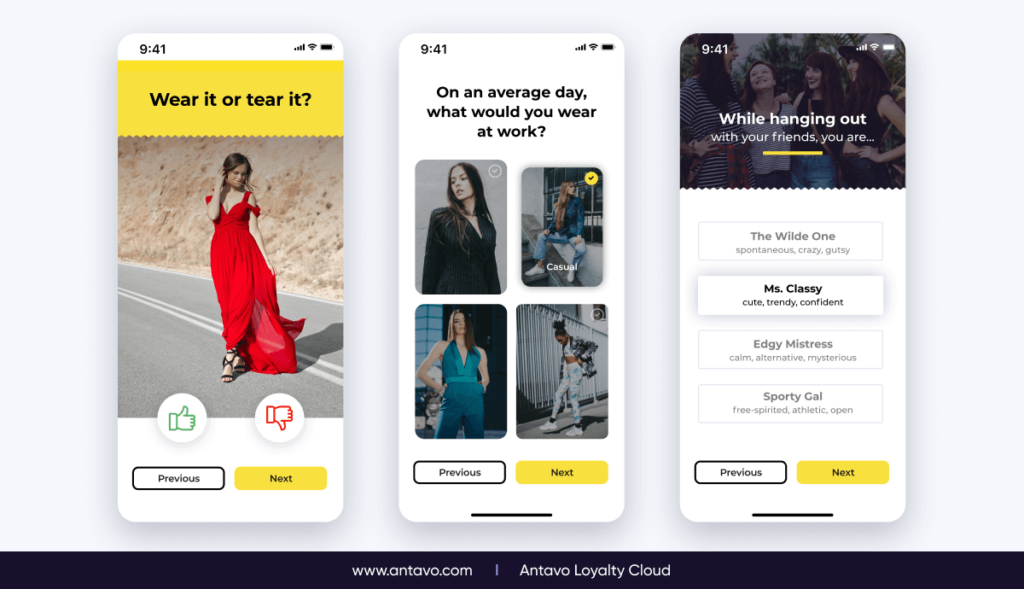
Interested in learning more about Antavo’s elaborate and insightful loyalty platform? Don’t hesitate to book a demo or include Antavo in your RFP process.
Don’t forget to check out our Global Customer Loyalty Report with a complex and practical look at the state of customer loyalty and insightful predictions for its future.



